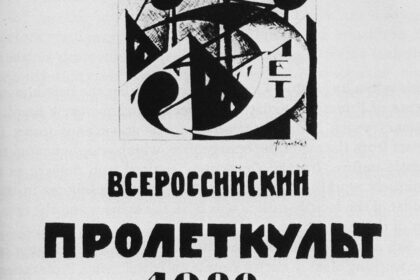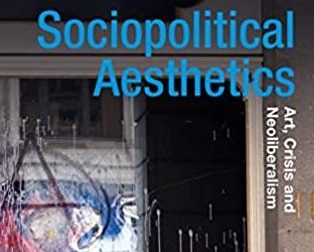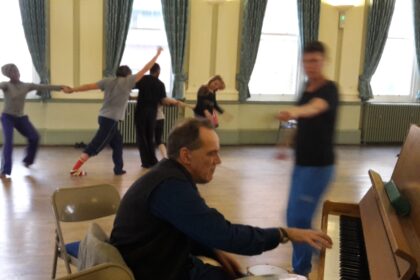Book Review: Potential History: Unlearning Imperialism, by Ariella Aïsha Azoulay (New York: Verso, 2019)
Sascha Crasnow
The 2020 protests in the wake of the murders of George Floyd, Ahmaud Arbery, Breonna Taylor, and a seemingly ever-growing list of Black lives taken by White police officers and armed civilians brought about a resurgence to the public fore of discussions around race and racism in America, from our police force to our cultural institutions. After the looting of a Minneapolis Target store, and subsequently other businesses throughout the country, many conversations turned to what sorts of protests and acts of resistance are deemed permissible. As criticisms of looting rose in some circles, others responded, pointing toward museum institutions, noting that encyclopedic institutions’ collections are constituted from looted objects. While this was certainly not the first-time questions of object repatriation have been brought up in critiques of imperial looting and calls to decolonize the museum, these events spurred renewed conversations about where these objects belong, institutional transparency about the acquisition of their objects, and the role of institutions in colonial and neo-colonial histories and contemporary realities. Although Ariella Aïsha Azoulay’s book Potential History: Unlearning Imperialism was published prior to the events of summer 2020, her discussion is timely in its relevance. The role of looting, archives, and museums in imperialism, how repatriation and reparation (among other responses) can be approached in a way that seeks to do more than absolve the offender, and the ways we can reimagine a society that does not replicate the racist imperialist structures that shape our lives today are topics that are increasingly part of conversations around and within art, museums, other cultural and academic institutions.
In Potential History: Unlearning Imperialism, Azoulay argues that gestures of repatriation and reparation are insufficient if they continue to function within and uphold the institutions, histories, and onto-epistemologies that currently exist and are rooted in imperialism. The solution, Azoulay suggests in the book, is that we must unlearn imperialism. This means imagining a present that is rooted in realities of a pre-imperial time. This is not the writing of a counterfactual history, as she notes, which imagines that the moment or disastrous event of imperialism did not happen, but one which approaches our current reality (one rooted in imperialism) with a framework of a pre-imperial understanding—one which rejects the imperial temporality of progress (21, 351). She exemplifies what this unlearning might look like in Chapter 1: “Imagine that the presumed factuality of the sentence ‘a Mexican migrant was killed while crossing the American border’ becomes impossible because one sees through imperial shutters and recognizes that a Mexican cannot cross illegally a foreign border erected illegally on her own land” (7-8). Azoulay asks us to question the categories of “refugee,” “infiltrator,” “undocumented,” “citizen,” “illegal worker,” as factual—acknowledging the imperial imposition of these categories onto people through archives, history, and frameworks of sovereignty and human rights—categories she dives into in detail in subsequent chapters.
In Chapter 2, Azoulay begins with the looting of art objects for the collections of imperial museum collections. She lays out how, in many cases, museums were created to make a space to house looted plunder from imperial ventures, rather than objects being looted for the sake of populating pre-existing collections. As such, these institutions are inextricable from an imperial framework—they were founded to serve and as a part of imperialism (100). Additionally, she highlights how discussions around the looting of these objects are reduced to conversations about the deprivation of these communities of their own objects as art, rather than the consideration of how these objects may have functioned within these communities’ worlds—and thereby how the removal of these objects contributed to these worlds’ destruction (58-9). This is perpetuated in the contemporary era through the inaccessibility of these objects to both these communities’ ancestors, as well as those scholars from these communities—meaning that the histories and narratives around these objects continue to be written most often by those outside these communities (80). Azoulay suggests that the only way “[f]or these institutions to be transformed or reformed, […] is [for] looting [to] be acknowledged as their infrastructure” (143, emphasis in original). It is not enough to simply give objects back (though that should be done as well), but that the institution itself must be transformed to acknowledge this reality in order to not continue to replicate imperial forms. Models for these reimagined institutions are not explicitly outlined in this chapter, but may perhaps follow some of the guidelines and frameworks for reparations laid out later in Chapter 5.
As a scholar of visual culture, and particularly photography (The Civil Contract of Photography, 2008; Civil Imagination: A Political Ontology of Photography, 2012, among others), the camera and the photographic document become exemplary sites of imperial violence through forging imperial knowledge for Azoulay’s study. Chapter 3 focuses on the archive, and in particular the photographic document within the archive. Azoulay draws out that the archive is not simply an institution, a site which houses documents deemed worthy of preservation, but functions as a “regime” that has impacts on the lived realities of individuals in the world. The archive justifies and legitimizes the classification of peoples into categories (e.g. “undocumented,” “citizen”), which allows for them to be treated in particular ways, or rather gives the perception that this treatment is justified (171). Azoulay enacts unlearning imperialism in the archive through images from the International Committee of the Red Cross (ICRC) of Palestinians during their expulsion in 1949. Azoulay had wanted to display them in an exhibition, but with her own captions, rather than the ones the ICRC had provided, which, for example, characterized the exile of Palestinians to Jordan as a “repatriation” (207). As the ICRC would only allow for the exhibition of these images with their own captions, rather than acquiesce, Azoulay created drawings from her own memory of these photographs, titling them “unshowable photographs.” In her book, she includes her own captions, including the original title and the reasons that it is an inaccurate description of what appears. This refusal to accept the framework the caption imposes on the image, the imperial regime of the archive on the photograph, allows for a presentation of the image from outside the imperial interpretation. Azoulay concludes the chapter by examining two case studies of “nonimperial approaches to photographic archives:” the “scarcity of images” of the mass rape of German women by Allied soldiers at the end of the Second World War and her own interventions into Zionist archives. Examining images of Germany at the end of the war, Azoulay asks how the existing photographs of post-war destruction in Germany can be read, rather than for what they depict, for what they might be indicative of that is not depicted—namely the mass rapes of German women. In reading images in the Zionist archive, Azoulay seeks to undo the category of “infiltrator” which the archive imposes onto Palestinians depicted, reading it as a category produced by the archive and rejecting it as factual.
Chapter 4 looks at the role of historians and history-making as imperial violence, and utilizes Audre Lorde’s “The Master’s Tools Will Never Dismantle the Master’s House” as the basis for constructing an approach to potential history. Azoulay states, “Potential history is not an alternative account of this already historicized world, but rather a deliberate attempt to pulverize the matrix of history, to disavow what was historicized by making repressed potentialities present again within the fabricated phenomenological field of imperial history, present to be continued” (288). It is a rejection that there is simply an alternative way to “do” history as we know it in a way that doesn’t perpetuate imperial violence. Continuing the thread that runs through the entire book, Azoulay’s intervention here is not to find new (untold) stories to tell within history, but rather to return to pre-imperial ideas and ideals and approach history from these frameworks. Again, this is not about an alternative history, but a potential history: “The point is not giving voice to a silenced past and making the invisible visible but releasing the past from its ‘pastness’ and letting it assume the vitality of what has always been there” (350). Potential history asks historians to avoid the imperial impulse to “fill lacuna” like imperial “explorers” themselves, but rather to give space for the potential presents that these absented, erased, and destroyed pasts could have and still can bring forth. As part of this, Azoulay returns to the medium of photography and introduces the concept of “untaken photographs” which are “an attempt to replace alleged absences controlled by one party to the event of photography, by presences, whose existence can be proclaimed by the photographed persons and spectators” (370). These “untaken photographs,” which can take the form of “a verbal description, a testimony, a drawing or a photograph of a re-enactment of the unphotographed event, based on a description by one of the participants in the event,” seek to take up space in the archive, reshaping the archive itself as a result (371).
Azoulay moves beyond the manifestation of imperial regimes in the institutions of the museum and the archive to the broader political sphere in Chapter 5, where she takes up sovereignty. As before, Azoulay looks to pre-imperial political formations to note that alternative conceptions of sovereignty existed previously, and therefore could exist again (387). This rejection of the nation-state framework of sovereignty and self-determination as the only outcome or manifestation of self-determination reminds me, anecdotally, of conversations I’ve had with some young Palestinian-Americans in recent years. While still vehemently invested in the end of Zionist occupation in Palestine, the idea of Palestinian statehood in the vein of replicating the hegemonic nation-state framework is not of interest to them. Rather they seek an alternative formation for Palestinian sovereignty. Azoulay presents the notion of “worldly sovereignty” which sits in contrast to imperial sovereignty. It is in this chapter that the role of a worldly community or “the commons” that appears in preceding chapters, begins to more concretely take shape. In contrast to imperial sovereignty which “consists of the massive expropriation of people’s skills so as to transform them into governable subjects in a differential body politic[,]… [w]orldly sovereignty consists of care for the common world in which one’s place among others is part of the world’s texture” (388). Azoulay argues that sovereignty is always produced not simply by “authorized actors for an audience” but rather “through the entire body politic” (419, emphasis in original). As such, sovereignty is always produced by the people, and imperial sovereignty can only be unlearned and undone through an acknowledgement of one’s place within the world and as a part of it—and thereby an investment in creating it for the commons rather than in the service of imperial actors. Azoulay reads graffiti tagged in Barcelona that says “tourists go home—refugees come” as an example of citizens “opting for worldly sovereignty, opting out of the global tourism that drains their community of its worldliness, and cho[osing] to repair a world that offers a home to all” (443).
Chapter 6 examines human rights as yet another site of imperial imposition. Within the framework of human rights, Azoulay distinguishes between “textual rights,” “imperial rights,” and “disabled rights.” Textual rights are those that are written—noted down to establish rights for some, which inherently denies those rights to others. Textual rights are used to justify imperial rights—the imposition of textual rights onto other worlds is enacted through imperial rights. In so doing, these rights created disabled rights—the rights that were de-activated in the imperial destruction wrought by imperialism (451-2). The construct of human rights is imperial in so much as it claims to bestow a bare minimum of rights onto people whose own systems of rights and “worldliness” were destroyed by those who claim to benevolently grant them. The imperial granting of rights also allows imperial powers to differentiate between violations of human rights and legitimate actions by the state (475). This can be seen in acts of violence perpetuated by imperial states justified through claims of protecting sovereignty (Israel) or promoting democracy (the U.S.) rather than the violation of human rights (of Palestinians and Iraqis, among others). Unlearning imperialism, per Azoulay, involves not the granting of additional universal rights (by an imperially formed body like the United Nations), but rather through the re-enabling of disabled rights.
The concluding chapter of the book lays out an approach to reparations. Echoing the need for people to come together in the context of worldly sovereignty, Azoulay notes that reparations have to include both victims and their descendants as well as perpetrators and their descendants—a group that prefers to distance itself from its connection to imperial histories and their legacies. She notes, “the calls of the victims and the perpetrators are not interchangeable. They are irreducible to one another, yet they must be voiced together, as they emanate from inherited common structures” (542). As both groups are products of imperial systems, they must both be involved in their dismantling. Azoulay proposes that the descendants of perpetrators be motivated to join in on this call for reparations through the notion that they “have the right not to be forever perpetrators, hence the right to stop reproducing imperial violence and partaking in the destruction of our shared world” (569). She continues that in order to do this, descendants of perpetrators have to connect with the descendants of victims. Ultimately, she notes, “an act of potential history would see descendants of perpetrators in the position their ancestors should have been when crimes were perpetrated—that of returning what was taken and begging to be allowed a place in the shared world” (571). Their place in the world no longer assumed, these descendants should work to be accepted into this shared world.
Azoulay’s arguments are compelling and timely, especially given current conversations taking place today in academia, museums, and the art world writ large. The ideas laid out in her book have the potential for wide reach, from historians, art historians and political theorists in academia (particularly, though certainly not limited to, those scholars who work on the histories and politics of non-Euro-American communities) to arts and cultural workers to activists. However, as I read the book, I found myself wishing there was a more accessible version, as the ideas laid out are ripe for implementation beyond the theoretical realm and in our lived world (and it seems clear that Azoulay intends for this to be the case). My concern is not as much with the prose as the almost 600-page length of the tome, which may seem daunting outside of an academic context. But as I continued to read, I realized that perhaps a more easily disseminated version was contained within the text. Interspersed between each chapter are calls to imagine strikes geared towards specific groups (related to the preceding chapter’s focus): museum workers, photographers, the governed, and finally a call to everyone to strike until “the world is repaired” (530). In practical terms, perhaps these proposed calls for strikes by various groups could be distributed via pamphlets as appropriate: to museum workers, photographers, historians, and the general population. Perhaps these distributed calls to imagination could spur people to think beyond the confines of the ideas, institutions, and roles that already exist, and a mass unlearning could begin.
Sascha Crasnow is Lecturer of Islamic Arts in the Residential College at the University of Michigan. She writes on global contemporary art practices, with a particular focus on SWANA (Southwest Asia and North Africa), cultural responses to socio-politics, gender, and sexuality. Her scholarship has been published in the Journal of Visual Culture and Lateral, and most recently in the Winter 2021 issue of ArtJournal. Her book project, “The Age of Disillusionment: Palestinian Art After the Intifadas,” has been solicited by Duke University Press.











